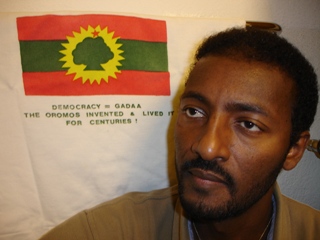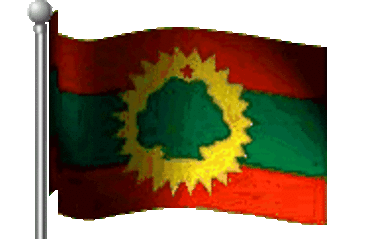400 Oromo civilians killed & over 12, 0000 left their homes when armed forces of Benishangul Gumuz suddenly attacked unprepared civilian Oromos.
A brief Report on the deadly interethnic conflict in Ethiopia-East Wallagga Zone (produced by a team of concerned individuals)
1. Introduction
The last one week has seen unprecedented systematic interethnic conflict between two neighborly and friendly ethnic groups (Oromo and Gumuz) in the western part of Ethiopia, East Wallagga Zone. East Wallagga is one of the zones in Oromia regional state that borders with the Kamashi zone of the Benishangul Gumuz regional state. The incident took place in parts of East Wallagga zone that borders with Sugee district of Kamashi zone, at a distance of about 350 Km west of Addis Ababa. The situation happens in the context of serious famine and food shortage in the whole country. Our team does not have information about the nature and degree of damage inflicted on the invading side because of administrative and physical inaccessibility. Our team is not also informed on the actual motive behind the invasion, and the immediate causes.
The two groups have so far maintained a long history of peaceful coexistence and cooperation. However, since the adoption of federalized government structure in Ethiopia in 1991, the two groups, as elsewhere, began to develop some degrees of suspicion and hatred at each other, over borderline land resources. No significant clash has ever been seen until May 17, 2008, when a significant number of well armed forces from the Benishangul Gumuz regional state suddenly attacked unprepared civilian Oromos early in the morning, before they were even awake from sleep. As the attackers were well armed with AK-47 and other unmentioned heavy machine guns, and were highly trained military personnel, they inflicted deadly massive casualties on the unawake Oromo civilians.
Conflicts have been reported in the following parts of East Wallagga. These are:
Saasiggaa District, particularly at Haroo Waataa, Camp 4, Camp 5, Camp 8, and Baloo villages;
Limmu District, particularly at Arqumbee village; and
Other areas (clear location not found): Amba 7, and Mandar 10 villages. The conflict is still spreading to other areas in the region.
2. Scope of the attacks
The invaders’ actions include mutilation of body parts (arms, legs, and other organs of children, breasts of women, male genitals), throat cutting and slaughtering, burning down of housings and other properties, looting of properties including animals, raping of women and children, and burning of dead bodies in masses, to make access to information impossible. Very disturbingly, the invaders seriously target the male section of the society. They also snatch infant babies from mothers’ backs and kill, only to force the mothers to eat the flesh of their own babies.
Access to information has been intentionally made difficult, not only by the killers, but also by government structures. We are able to get information only for a limited part of the victim population (Saasiggaa district), and only for limited days of the incident (May 17-19, 2008). According to key informants and victim families, the names of which we don’t have to disclose due security reasons, the following major causalities have resulted from the incident.
3. Consequences of the conflict
3.1 Lose of lives
A total of 400 Oromo civilians are estimated to be killed until May 19, in the areas mentioned above. About 65 of the dead are from Haroo Waataa village of Saasiggaa alone. Most of the dead are male children and the elderly. Only 115 dead bodies were found and buried in groups, in just four graves (40, 30, 25, 20 bodies). The remaining bodies, most of them burnt or eaten by dogs and hyenas, are being gradually discovered.
The following list provides the names of some of the dead, in Saasiggaa district. The age and other identifications of the victims could not be found, for the moment.
Tasfaayee Qana'aa
Waq-gaarii Deetii
Boggaalee Waaqtolee
Salbaanaa Galataa
Kabbadee Salbaanaa
Fiqaaduu Salbaanaa
Fayyisaa Wadaajoo
Tarrafaa Nagaraa
Badirii Jamaal
Samu'el Waanee
3.2 Injuries
According to the key informant’s observation, about 40 seriously injured Oromo civilians were receiving medical treatment in Naqamtee Hospital as of May 19. Below is the list of only six of them, all of them from Haroo Waataa village:
A. Saamu'el Tolasaa (See Picture 1)
B. Daani'el Dhaabaa (See Picture 2)
C. Adam Muhaammad
D. Darajjee Fiqaaduu
E. Addaamuu Imaanaa
F. Warkinesh Fiqaaduu
G. Abraham Mallasaa
3.3 Lose of properties
There is no quantified information about the extent of property lose resulted from the conflict. Generally, however, the properties of three villages in Saasiggaa, including Haroo Waataa and Baloo have been irrecoverably damaged: housings and in-house properties, including crops were totally burnt down; and the livestock were looted by the invaders. Similar types of loses of property have been reported elsewhere covered by the conflict.
3.4 Displacement
Civilians in the affected areas have continued to flee their homes and properties beginning with the onset of the conflict on May 17, 2008. Until May 21, over 12, 0000 people are believed to have left their homes, and are camped in Naqamtee town and at a primary school in Saasiggaa district. According to a key informant, the Ethiopian Red Cross is providing minimum basic life-saving assistance to the victims.
4. Action taken by the government to stop the conflict
According to the Ethiopian Law, civilians are not allowed to bear arms in general. Hence, Oromo civilians are totally unarmed. On the contrary, even ordinary Gumuz people are armed. The armed invaders used that opportunity as a source of arms supply for their continued killings. However, both the regional and the federal movements exhibited significant reluctance at stopping the conflict. Although the federal government has deployed its forces, they remained witness to the raging killings, instead of stopping the killers. They rather successfully prohibited Oromos from neighboring villages and local militias from coming to the rescue of the victims, and from and defending themselves. Most of the loses (both life and property) happened at the presence of the federal forces.
In further worsening of the situation, the government has systematically blocked access to information through prohibiting access to victims and the damaged areas, by information seekers. Neither government media nor the free press has brought the issue to public attention.
5. What should be done?/forward looking
The problem is a very serious threat to peace and security of the country in general, and to the two neighboring regions, in particular. It is a gross and serious violation of human rights. We, therefore, appeal to the international community in general and to receivers of this appeal in particular, to bring the matter to the attention of the international community, and put pressure on the Ethiopian government to take immediate and meaningful action to stop the violence, and to provide basic necessities for victims, and to solve the problem in a sustainable manner. Secondly, we strongly recommend to the Ethiopian government and the international community to bring the perpetrators to justice, and to compensate the victims and their families.
6. Annex
As we can not provide all necessary evidence and information about the conflict due to the stated access blockage, we have hereby attached only three pictures related to the incident. We promise to update you on the matter with information and evidence, as we succeed to get them.
Individuals concerned about human rights (please contact us using same e-mail address)
Dubbii Guddaa (dubbiiguddaa@yahoo.com)



0 Comments:
Post a Comment
<< Home